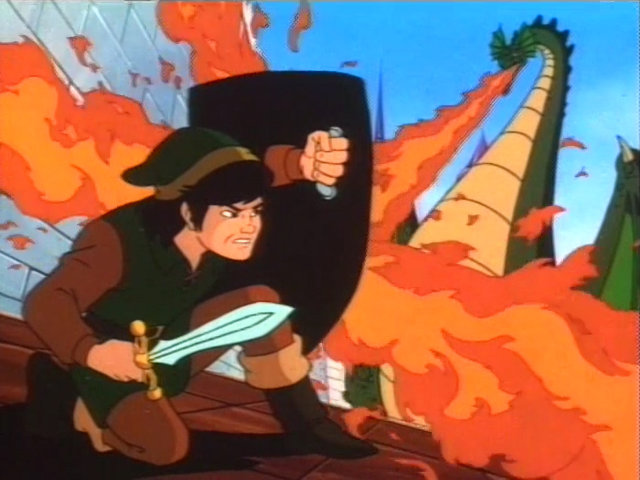
The Legend of Zelda aired as part of the Super Mario Bros. Super Show, featuring a live action Mario and Luigi, which took up about a third of the running time. The original broadcast actually had a live action intro, and then a second intro for either the Mario or Zelda cartoon.
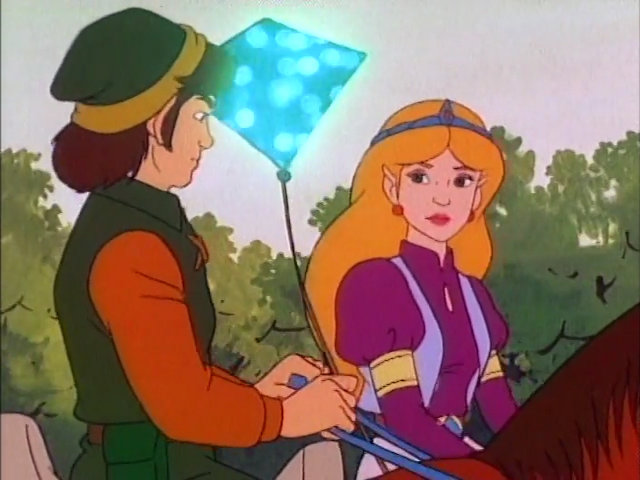
Occassionally, Zelda brings out the Triforce of Wisdom to face Ganon and his Triforce of power. I’ll give them the benefit of the doubt and assume they rendered the Triforces as tetrahedrons, which would give them diamond shapes from certain angles.
Review by Jay Wilson I vaguely remember seeing a single episode of the animated Legend of Zelda series one morning while visiting my grandparents. I can’t say for sure if I caught the entire episode or just part of it, but I do vividly recall the sneak peek for the next chapter where Link dies and Zelda has to rescue his spirit from Ganon. “Wow,” I thought, “That looks amazing!” Unfortunately, The Legend of Zelda played only on Fridays as part of the Super Mario Bros. Super Show, and my family and I would go home before the next Zelda episode aired. We lived several states away with different programming, so I would never get to see it. Weirdly, Captain N and the various Mario cartoons did play in our region, but not Zelda. Anyway, while I didn’t hold my breath that whole time—I almost always found something on TV that didn’t air back home while visiting distant relatives—I would occasionally wonder what happened. Decades later, I looked the series up and found it on DVD for dirt cheap. Not surprisingly, it only ran for thirteen short episodes, clocking in at a little over three hours. “Eh, what the hell? With such minimal investment, it’s gotta be worth a peek.” No. No it was not. To be clear: I knew it was not going to be Avatar: The Last Air Bender. I have revisited old childhood favorites over the years, and most of them did not age well (Transformers, Ninja Turtles). Even back then, the animated Mario 2, 3, and World cartoons by DiC Entertainment were silly by naïve ten-year-old standards, but harmless fun none-the-less. Unfortunately, however tempered my expectations may have been, I did not think I would hate Link, the main character, thirty seconds in to the first episode when he speaks his first line. You see, the adult creators portray Link as what they think a six-year-old’s idea of what a cool teen looks like, resulting in a childish and condescending product more convoluted than this sentence. The series starts with the hero of Hyrule waking up and complaining, “Yuck! Another beautiful day in the magical kingdom of Hyrule. Boring place! I used to roam the world, fighting monsters and sleeping in mud. A hero’s life! Now look at me! Living in a castle, sleeping in a bed! Aren’t I sweet! Yuck!” Look, I get it. The show runners wanted their protagonist to be a free spirit, unconstrained by civilization’s silly social norms, and drawn to a life of excitement and adventure (just like a naïve child), but Link literally has everything he wants—guarding the most beautiful princess and the most powerful artifact in the wealthiest kingdom from the most dangerous villain—and he’s still bitching (just like a naïve child). 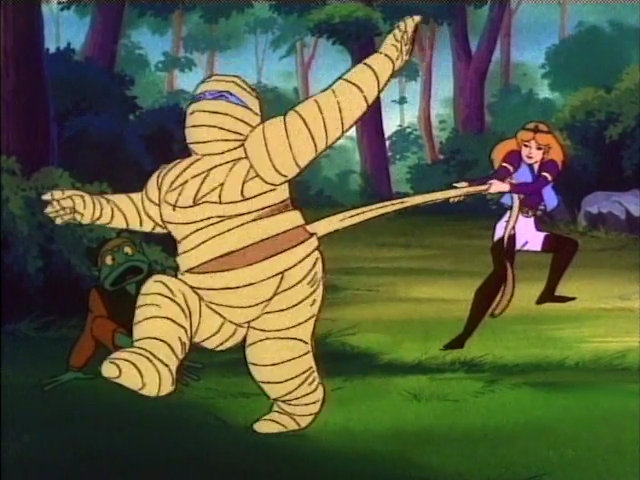
Of course, Zelda defeats the mummy by unwrapping it, and of course she has to say, “Let’s go for a spin!” because that’s what kids cartoons did in the 1980s.
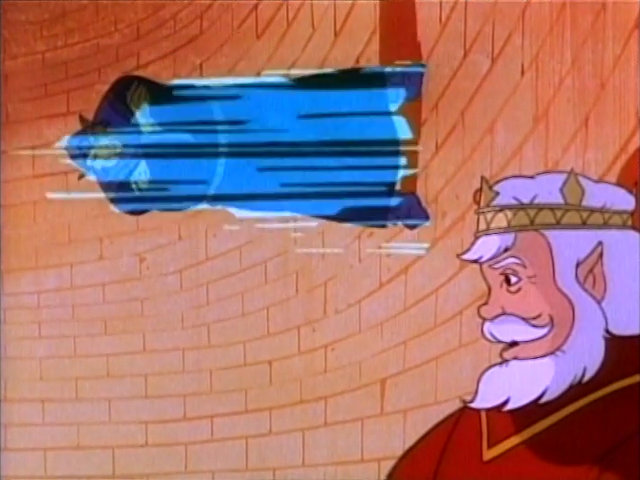
In the original NES game, Ganon turns invisible and moves around the room, teleporting to a corner when hit. The cartoon understandably focuses on the teleportation because invisibility sounds interesting, but in actuality presents more problems and complications than it’s worth.
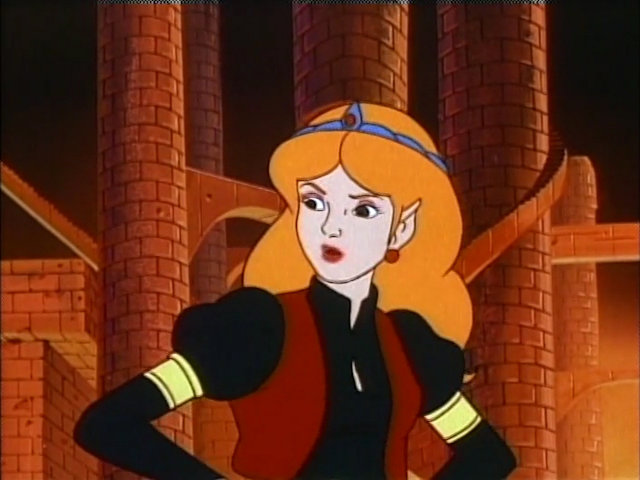
Fun fact: this is supposed to be the real Zelda. I like to believe the colorists mistakenly gave her the evil doppelganger’s palette because they couldn’t tell them apart based on the dialog.
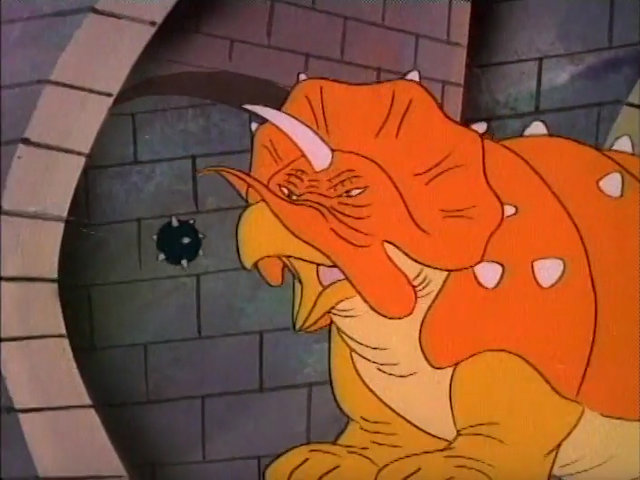
Honestly, I don’t have any real complaints regarding accuracy to the game. I’ll playfully nitpick things (like boomerangs hurting Ganon) but nothing really bothers me.
And it’s easy to write off all criticism with, “Yeah, but it’s a kid’s show.” However, I expected the shallow and obvious puns that litter 1980s assembly-line children’s programming. I expected Link to contradict himself episode to episode, most notably the last episode where he doesn’t want to claim the Triforce of Power and defeat Ganon for good because, “Then I’ll be out of a job!” (Yes, that same job he complained about in the first episode when he stated, “I’d like to know one good reason why I stay here.”) I even expected the dialog to spell out the obvious for a young audience. But, these characters literally state everything multiple times all the time. In episode nine, series villain, Ganon, recites the entire plot after its initial setup. “Somewhere scattered within my realm are the two pieces of the Triforce1. Link and Zelda are trying to find them. And when they do, I’ll be there.” Three scenes prior, Link and Zelda set out to the Underworld to collect the Triforce of Wisdom’s shards, and they verbally spell out their intentions. In the next scene, Ganon verbally spells out his plan to let the heroes do all the work searching so he can just pop up and steal it out from under them. The next scene shows Link and Zelda entering the Underworld. And then Ganon recaps the entire episode. In fairness, a commercial break would have fallen in the middle of these four scenes along with a live action Mario segment, so while on the DVD it all happens uninterrupted within the span of three minutes, back then it would likely take around five to seven minutes with the immersion completely shattered. Thus, post-commercial recaps were not uncommon, but more clever shows integrated it as throwaway dialog while the characters actively do something. For example, they might have Zelda say, “Link, we have to find the pieces of the Triforce before Ganon does!” while the two run down an Underworld corridor. You could make an argument that Ganon also summons monsters to pursue Link and Zelda after the lengthy recap, so that scene does advance the plot. I would argue the recap monologue could be cut and replaced with one line while he summons the monsters, but whatever. However, let me also point out that in episode six Ganon actually utters the words, “I’m very upset,” reminding me of the classic Futurama scene when the Robot Devil critiques Fry’s Opera: “You can’t have your characters announce how they feel! That makes me feel angry!” Except here, it’s not a joke. Ganon just announces his feelings while throwing furniture and breaking things, which by the way, comes after the King states, “Once Ganon discovers the Triforce isn’t here, he'll be mad.” And Zelda only compounds the series’ problems because the creators wanted her and Link to bicker back and forth, which is fine—I love characters bickering. However, the circumstances always undermine the potential humor. In episode eight, while searching for the other two Triforce shards, Link rightly asks Zelda which door to go through. Zelda takes out a magic compass, puts it on their Triforce shard, points directly at one specific door, and tells Link, “That way.” No complaints. So far so good. But then monsters pop out from said specific door and attack. Link defends himself, Zelda, and the Triforce—and, by extension, all of existence—and Zelda literally tells him to stop because, “Ganon will know we’re here!” It then escalates into a full-blown stupidity avalanche as Zelda’s self-destructive protest distracts Link so the snake-like monsters can bind his arms and legs. Then Zelda has the nerve to sigh and say, “I suppose I better get you loose.” Then she kills the last two monsters—you know, the thing she just told Link not to do? Then finally, as Link lies on the ground catching his breath, Zelda darts past and chastises him. “C’mon! Stop sitting down on the job!” And while that is the single worst incident by far, it is not isolated. The very first episode has Ganon creating a minor distraction in the form of a giant fire-breathing dragon, which causes Zelda to scream, which causes Link to come to her rescue, which causes her to demand, “What are you doing here?! You’re supposed to be guarding the Triforce!” Another episode has the two ambushed by octoroks (land-octopus-like monsters that spit rocks). Link thinks quickly, grabs Zelda, and jumps to safety several platforms down. How does Zelda thank him? “Don’t you ever do that again without telling me!” It’d be one thing if Zelda was a prissy princess who only serves as a damsel in distress—and she is when it serves the plot—but in these specific instances, Zelda actively participates in the dragon’s defeat and leads the charge to track down her evil doppelganger in Ganon’s lair when the octoroks attack. And, by the way, Zelda ultimately deals the killing blow to her doppelganger with Link’s sword ninety seconds later, so it’s not like she doesn’t understand split-second decision making. 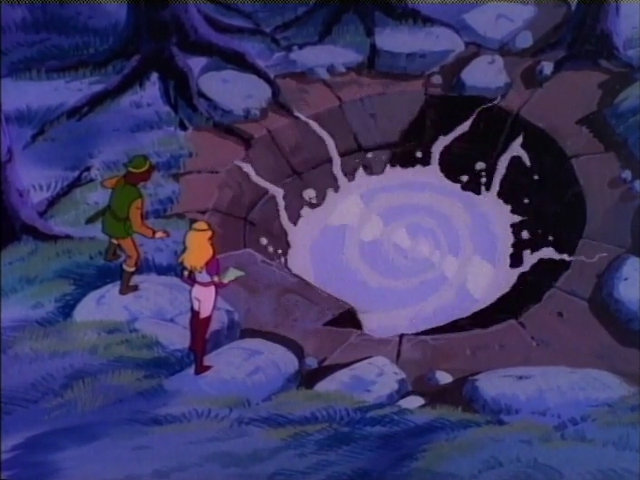
In the game, Link uses the magic whistle to reveal the entrance to Level Seven in a fairy pool that has no fairy; the show nicely references this with Zelda using the Triforce of Wisdom to open up the underworld at a small pond.
It's like they copy and pasted elements from sitcoms to create this Frankenstien mish-mash of generic television tropes without any regard for logistics, consistency, or focus, resulting in what would be some truly creepy moments if you could take the show more seriously. Zelda not only plays the nagging mom to which Link spouts the annoying catch phrase, “Well, excuse me, Princess!” but she’s also the love interest, triggering the other catch phrase, “Kiss me, Princess!” Every. Single. Bloody. Episode. Sometimes they come back-to-back. In episode nine, both catchphrases appear twice in about two and a half minutes (and no, there’s no commercial breaks between them—it’s literally back-to-back). Sometimes Zelda refuses like a little girl who still believes in cooties; other times she accepts, and right before they touch lips, something happens. And I wanted to like Zelda. More so than Link, I wanted to like Zelda. Her design is right up my alley with the tight pants, thigh-high boots, spiffy top with an open vest. Half the time, she adventures right alongside Link and holds her own in a fight, that is, when she’s not arbitrarily relegated to damsel in distress or stuck up, pampered, daddy’s girl whenever the plot calls for it. But, whatever. Kid’s cartoon. Absolute consistency is not on my list of expectations; however, I do expect the characters to acknowledge and appreciate dangerous situations. Even Inspector Gadget gives gravity to Doctor Claw’s schemes through Penny even while her naïve uncle remains oblivious. In The Legend of Zelda, however, neither protagonist seems to care 99.9% of the time. In episode one, while Ganon literally runs away with the Triforce, which will hypothetically allow him to conquer all Hyrule, Link and Zelda catapult themselves to catch up. Link breaks Zelda’s fall and says, “Saved your life again! Kiss me, Princess!” In episode two, Ganon is again literally running away with the Triforce. Vines come to life and snatch Link up. Zelda giggles then says, “Dum-de-dum, I suppose I better get you loose … I guess.” And I could go through all thirteen episodes like this. It’s not that Link pursues Zelda’s affection, and it’s not that the two tease each other about saving one another’s life—it’s that they do it when it doesn’t make any sense. 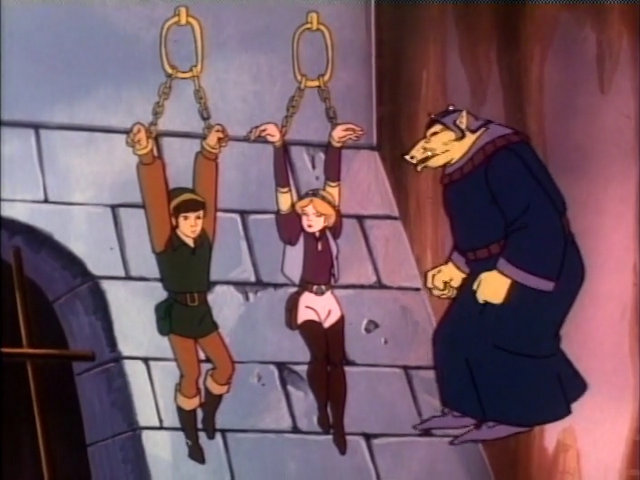
The typical cartoon formula is a straight jacket. A show like Inspector Gadget succeeds because it plugs different settings, side characters, and minions in to the same plot. The Legend of Zelda, however, does not have that luxury. It’s Link, Zelda, Ganon, Triforces, and Hyrule. That’s it.
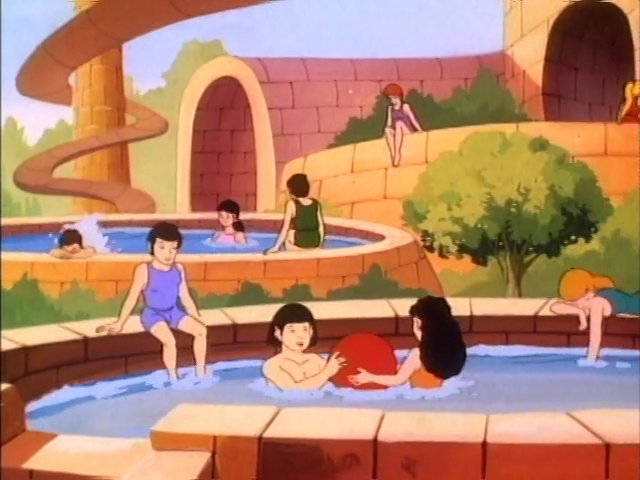
It wouldn’t be an 80s DiC cartoon without at least one wildly inapproapriate story. In episode eleven, monsters interrupt the King’s plans to build a waterpark, and it’s up to Zelda and Link to solve the Scooby-Doo mystery!
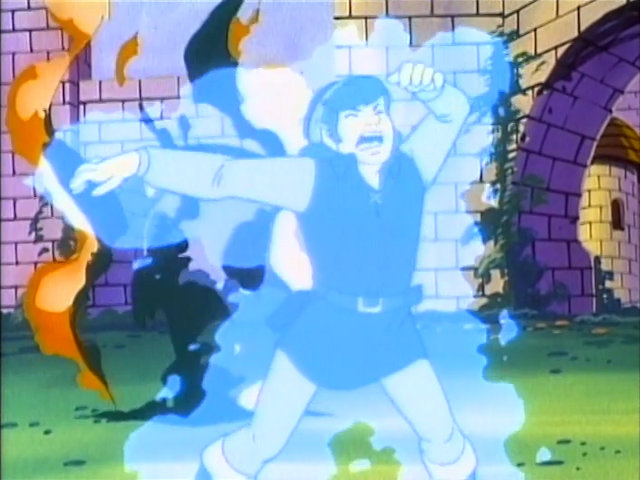
The Legend of Zelda does not work for episodic “everything resets by the end” style stories. Zelda is about a quest, an adventure. The series needed to be more like Avatar: The Last Air Bender with the heroes collecting pieces of the Triforce to eventually challenge Ganon.
And yes, other kids shows—better kids shows—know when to put the jokes on pause for a few seconds while the characters deal with the threats. Are there any good episodes? Not in their entirety, no. Episode three does a far superior job introducing Hyrule than the first episode. Link and Zelda wait on a blacksmith to fix their horse’s shoe. He ignites a furnace with a spell, and Link says, “Boy, I’ve never seen a place as rich in magic as Hyrule. Everyone seems to know a little.” To which Zelda replies, “That’s why Ganon wants it so badly” while she adjusts her hair with her own spell. And it’s a nice little organic exchange that effectively communicates the setting to the audience without making Link (or Zelda) sound like a whiny brat. It also doesn’t give the magical Triforce MacGuffin to the villain who wants to conquer the world like the first two episodes. Unfortunately, despite its strong start, episode three goes on to introduce Prince Façade and his spotless white royal outfit, and by his on-the-nose name and refusal to shake Link’s dirty hand, you already know the entire episode. Zelda will fall for him. Link will get jealous. Façade’s fear of filth will leave Zelda high and dry, and Link will get his hands dirty to save her. And you won’t be surprised by any of the awkwardness that’s supposed to pass for humor: a smitten Zelda introduces Link, “This is my friend—well, um, an acquaintance—uh, somebody I know slightly. His name’s Stink.” And later Link dresses up in a ridiculous outfit to try and impress Zelda, tripping on the shoes he’s not used to wearing, and falling flat on his face so everyone can laugh at him. It doesn’t sink the episode, but it’s all off the shelf comedic devices that you’ve seen a million times, executed better in shows far superior to this one. I do like how in episode seven, Link quickly realizes the doppelganger is not Zelda but goes along with it to rescue the real princess. It doesn’t deliver, but the idea of a character using another character who thinks they’re using them at least suggests depth and complexity. I also like how when Zelda walks in on the doppelganger kissing Link, she correctly prioritizes getting the Triforce back over petty feelings for once. And despite my previous complaints, I appreciate episode eight with the Triforce shards lost in the Underworld because it comes the closest to recreating the original NES story. But my favorite is episode twelve, the one I saw the preview for all those years ago. Granted, characters can’t die in a kid’s show—they get “zapped into the evil jar”—but I did like seeing Zelda go it (effectively) alone to rescue Link’s body and struggle to wield his sword (even though she wielded it just fine back when she “zapped her doppelganger into the evil jar.”) More so than any other episode, it showed that Link and Zelda need each other and would do anything for each other, despite their bickering. But is it a good episode? No. Because what does Link’s ghost do when he learns that the reason only Zelda can see him is because—gasp—she loves him? He starts singing and dancing, “Zelda loves me! Zelda loves me!” in Ganon’s throne room, knowing everyone can still hear him, putting non-ghost Zelda in imminent danger. Even at it’s absolute best, The Legend of Zelda finds a way to undermine itself. | ||||||||||||||||||||||||
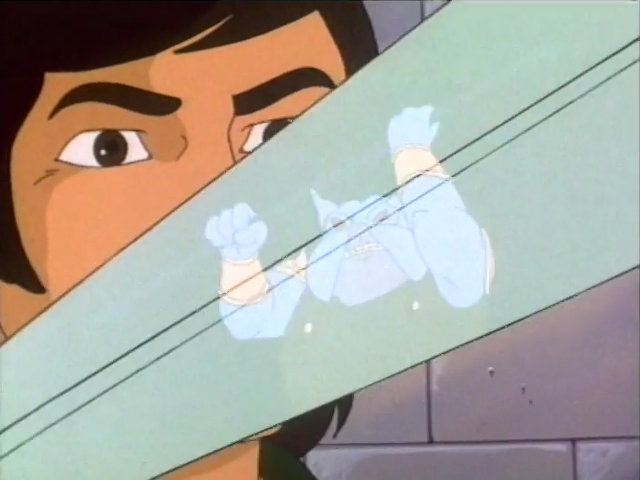
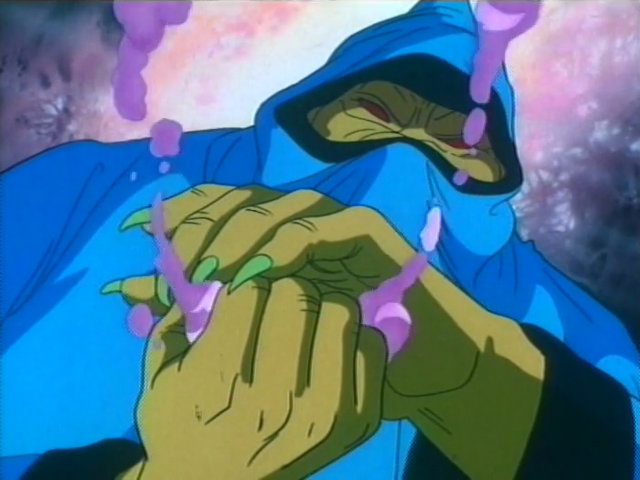
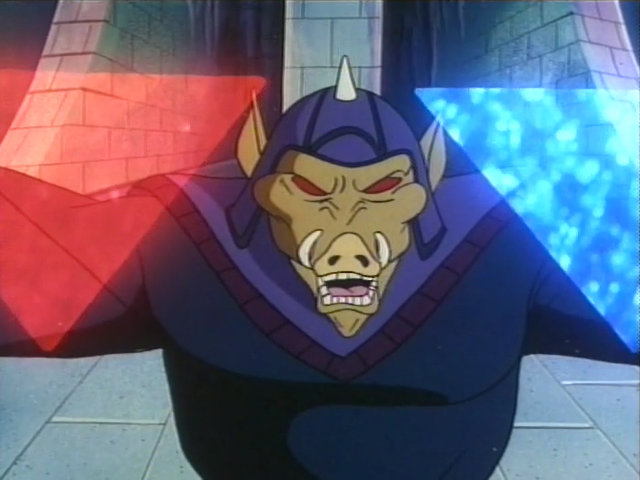
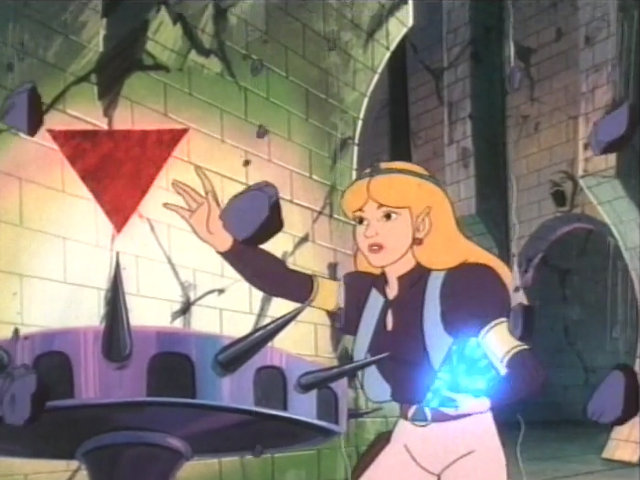 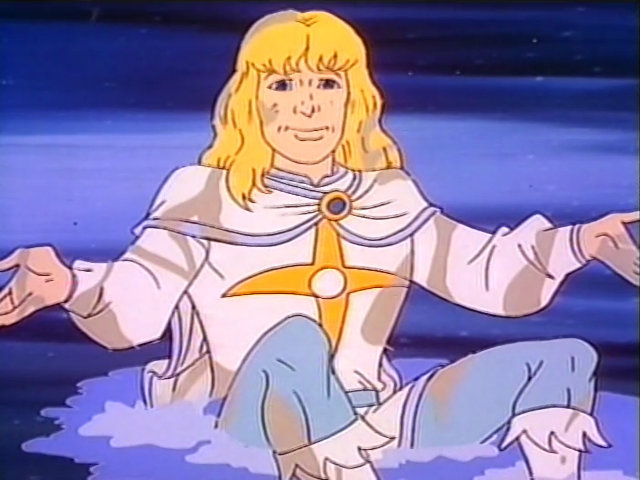
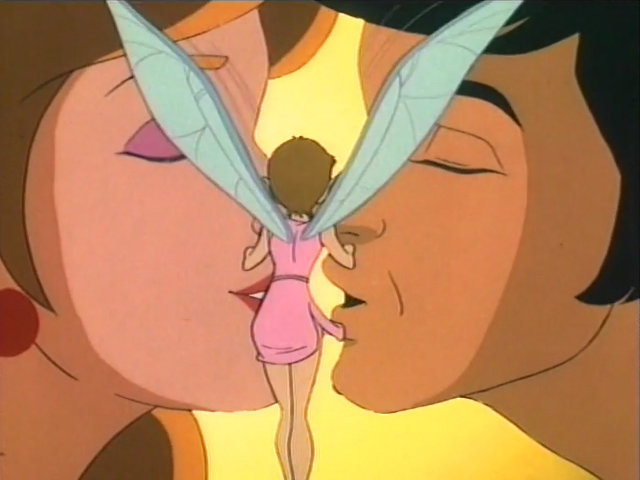
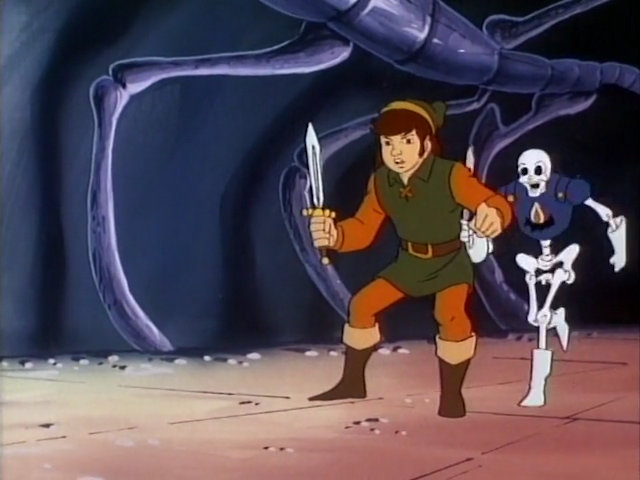 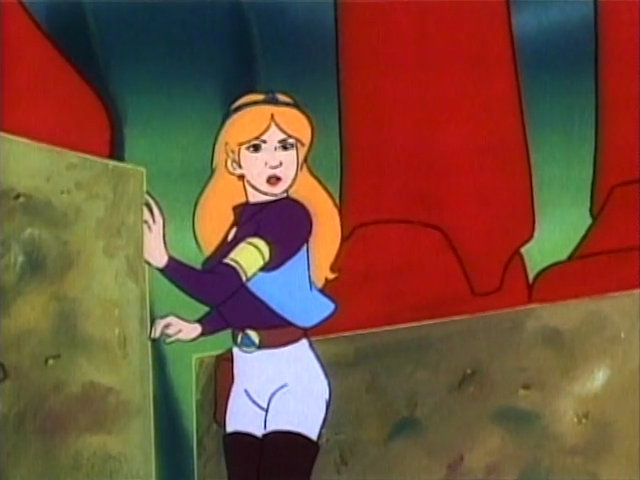
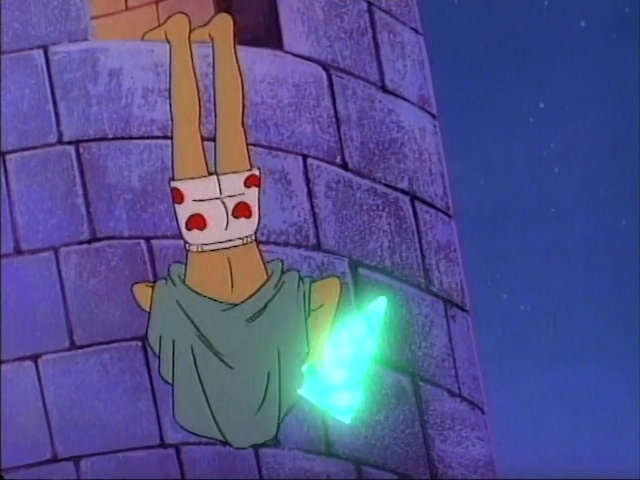
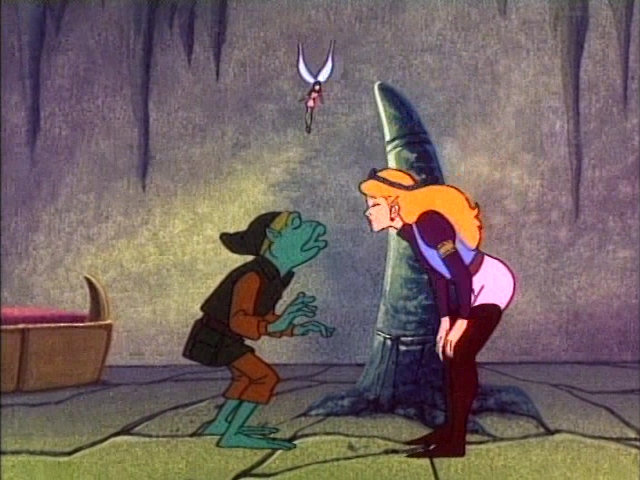
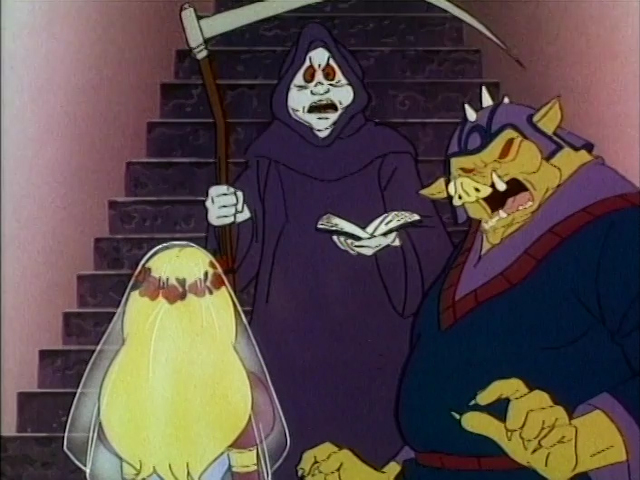
| ||||||||||||||||||||||||
|
1 There’s two Triforces. Ganon possesses the Triforce of Power while Zelda holds the Triforce of Wisdom. | ||||||||||||||||||||||||
